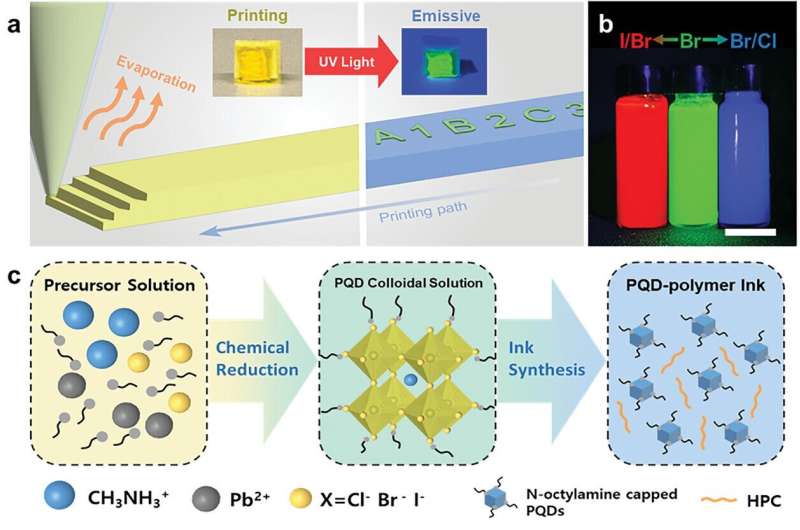
A technology enabling the fabrication of intricate three-dimensional (3D) quantum dot (QD)-based structures at room temperature has been developed.
Led by Professor Im Doo Jung from the Department of Mechanical Engineering at UNIST, a recent study has introduced a cutting-edge one-stop perovskite quantum dot (PQD) additive manufacturing technology. This approach eliminates the need for heat treatment, allowing for the creation of complex 3D shapes with exceptional precision, including iconic landmarks like the Eiffel Tower.
The research findings have been published in the March 2024 edition of Advanced Functional Materials.
Traditionally, shaping QD materials in 3D required prolonged heat exposure, leading to property degradation and shape deformation. However, the newly developed PQD materials exhibit remarkable luminous efficiency and color versatility, offering a game-changing solution for advanced encryption and anti-counterfeiting applications.
By meticulously optimizing key printing variables and utilizing hydroxypropyl cellulose (HPC) polymer and dichloromethane (DCM) as a volatile solvent, the research team achieved stable extrusion of luminescent PQD inks at room temperature. This innovative 3D printing method enables the creation of diverse structures emitting light in red, green, and blue (RGB) colors based on the primary light colors.
The study introduces a sophisticated anti-counterfeiting and encryption system utilizing 3D-printed geometric shapes that leverage the unique light emission properties of PQDs. Demonstrating the potential for enhanced security features in modern printed electronic devices, a 6 x 5 cube architecture array was designed using G- and B-emissive PQD-HPCs for encryption, displaying alphabetic letters (U, N, IS, and T) at 90° intervals.
Lead author Hongryung Jean said, “Our streamlined QD 3D printing process enables stable manufacturing at room temperature, promising advancements in information encryption systems and optoelectronic printing technologies.”
Professor Jung said, “This advancement preserves the photoluminescence properties of PQDs without the need for heat treatments, driving innovation in optoelectronic and energy applications.”
This research sets a new standard for encryption technology and anti-counterfeiting measures in the digital age.
More information:
Hongryung Jeon et al, 3D Printing of Luminescent Perovskite Quantum Dot–Polymer Architectures, Advanced Functional Materials (2024). DOI: 10.1002/adfm.202400594
Citation:
Study unveils 3D printing PQD-polymer architectures at room temperature (2024, May 2)
retrieved 2 May 2024
from https://phys.org/news/2024-05-unveils-3d-pqd-polymer-architectures.html
This document is subject to copyright. Apart from any fair dealing for the purpose of private study or research, no
part may be reproduced without the written permission. The content is provided for information purposes only.







